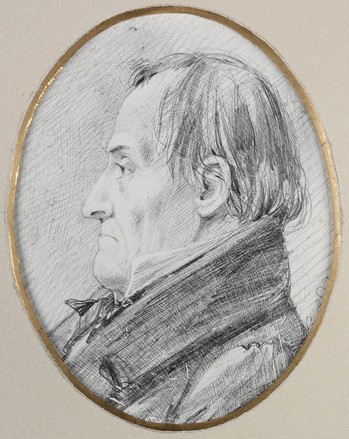
William Cox
1830
ML 1379
Pencil and metal point drawing
ML 1379
Pencil and metal point drawing
By 1830, at the time this portrait was created, William Cox was a highly respected magistrate and pastoralist. 15 years prior, he had completed his most famous feat of building the first European-built road across the Blue Mountains, after which he was sufficiently rewarded by Governor Macquarie. Cox received 2000 acres of land, £300, and a salaried position as Commandant of Bathurst which enabled him to enlarge and improve his agricultural holdings, as well as set his family up in comfort.
ThIS portrait is one of a pair; the partner image is of Cox’s second wife Anna. Both images were produced by the convict artist Charles Rodius during his first year in Sydney. This sketch is done in pencil and metal point, a technique which used a sharp metal-tipped stylus on prepared paper to create very fine scratched lines.


 Back to list
Back to list